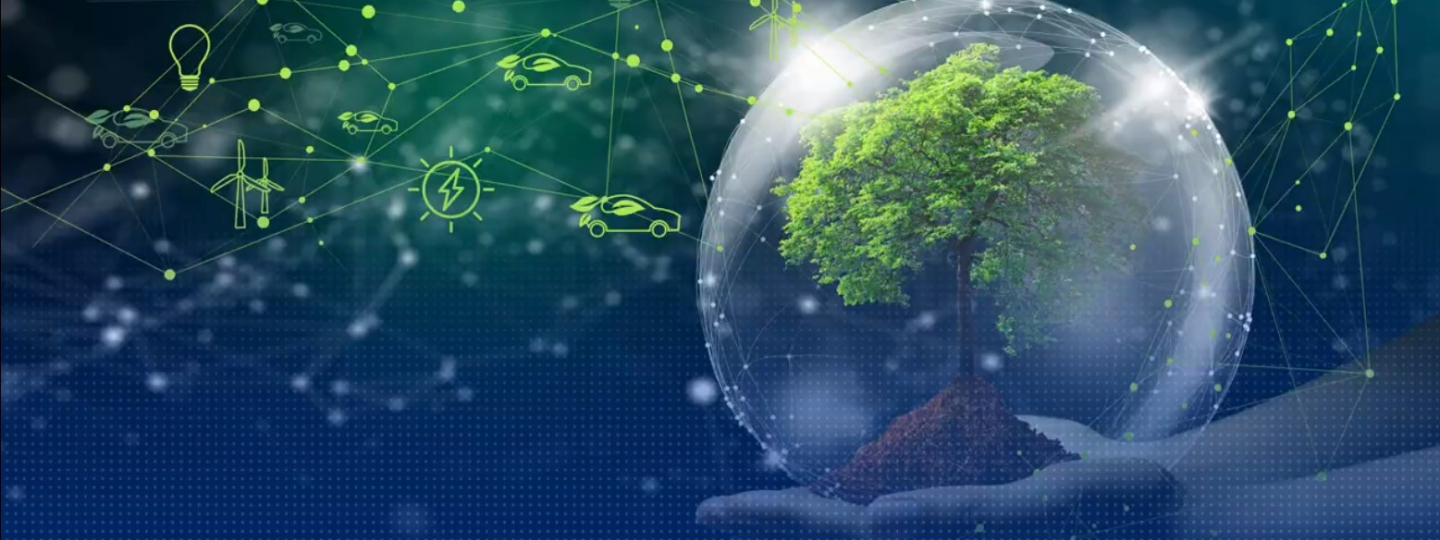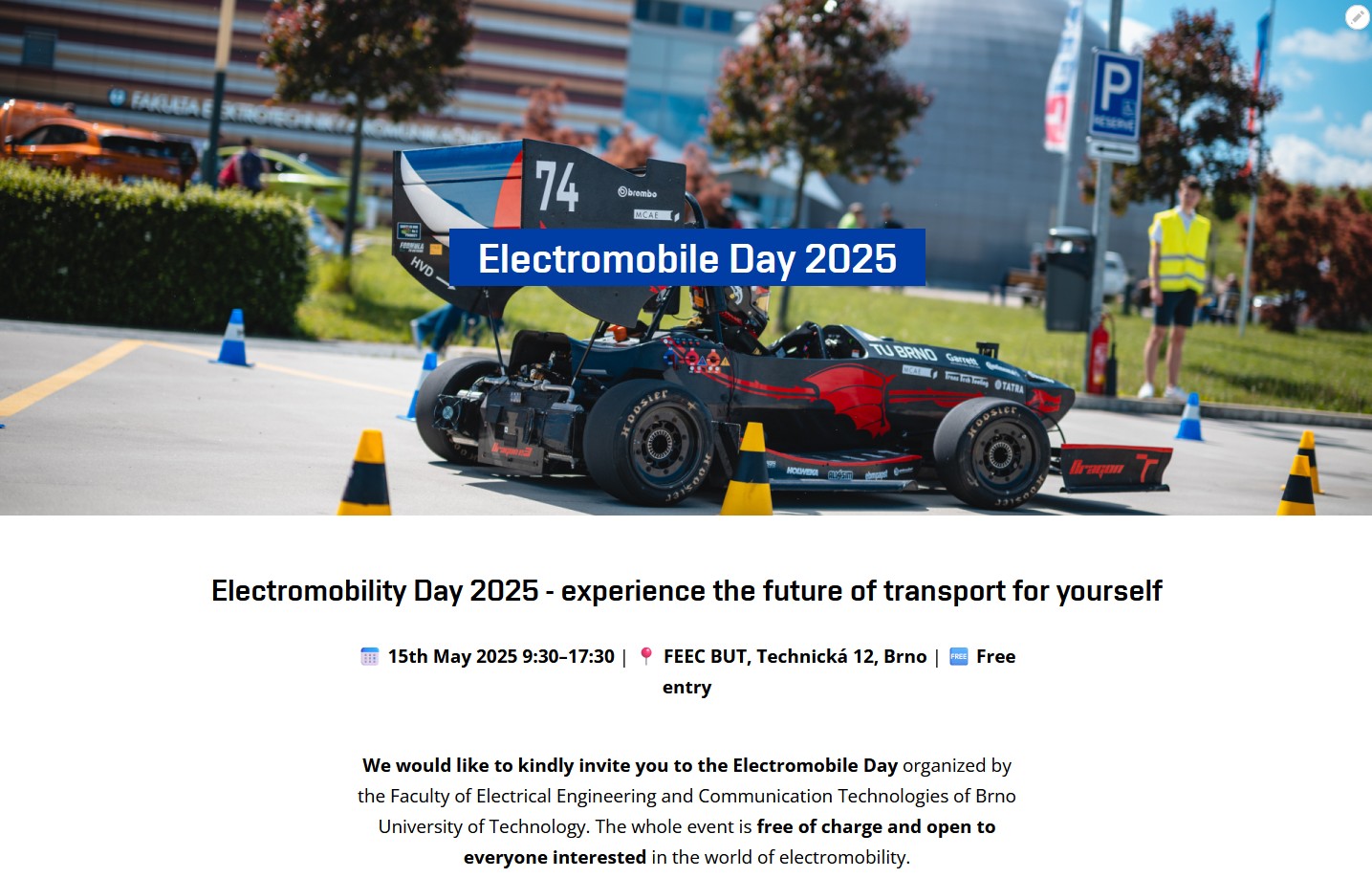Vision of the mobility challenges


Technical challenges and visions for future mobility
Colloquium for students, teachers, researchers and professionals
When
Selected Tuesday, 17:00 - 19:00, starting in the second half of February 2025.
Location
Brno University of Technology (FEEC), Technicka 12, room SF 1.141 - pass porter's lodge (the 1st floor), turn right and behind the glass door right again the first classroom. The room will be marked.
Electromobile day 2025-15.5.2025
Lectures programme in academic year 2024/2025
To recap what happened last year - motivation, inspiration, vision and challenges.
In the academic years 2022/2023 and 2023/2024:
In two years, 37 lectures have been held, focusing on technological solutions for transport today and in the near future from the perspective of selected experts and with the possibility of expert discussion on the topic. Some of the lectures and presentations are available in pdf format and two selected lectures have been made into video presentations. You can find them in the list of the Current Lectures programme. In addition to the lectures, there were also 5 events such as field trips, meetings, demonstrations and test drives, and this year's EV afternoon is definitely worth mentioning.
The colloquium was originally intended to fill a gap ahead of the upcoming Automotive Electronics and Electromobility teaching programme, which was expected to start in the academic year 2023/2024. The aim is to offer a space for students, teachers and other public and corporate experts on campus for expert discussion. The speakers have many years of knowledge in the field and the topic and will always be ready to answer questions from the audience on the topic. Currently in its second year, the conference is already in its second year and current program for academic year 2024/2025 is runnig.
What are the visions and challenges of future mobility? What do we want to discuss with experts and at a professional and substantive level?
Future perspectives
V2G, V2L, V2H, V2V, V2X concepts and the use of mobility for other applications
Charging
Charging standards for electromobility
Batteries
Lithium-based cells and their perspectives
Battery designs
Electronics and battery management
Range and route optimisation
Range prediction methods and algorithms for electric vehicles
Electric traction
Trolleys, railways, magnetic trains
Infrastructure for e-mobility
Integration of mobility infrastructure into the grid
Autonomous driving
Computers, artificial intelligence, computer vision
Fast charging
HPC and DC fast charging of electric vehicles
Drives
Motors for electromobility and their control algorithms
Electricity in the air
Electric propulsion in aviation
Safety
Issues of protection against dangerous touch voltage in electric vehicles, fire safety
H2
Hydrogen fuel cells for electromobility, prospects for hydrogen use in transport
Components for e-mobility
Industrial systems and standards and their application in practice
These topics are more or less illustrative and partly follow the content of last year's lectures. The content will be shaped according to the availability of speakers and their topics of interest. The colloquium is primarily a discussion platform, where the introductory expert lecture is followed by an open and substantive discussion on the topic with the expert present. All live and without preparation.
Motivation
Is electromobility viable?
a question not only of this century
Do we have another option today that is more promising? What chance does hydrogen have in competition with battery vehicles? Electromobility in conjunction with renewables offers hope for a wide range of future technologies. The electric car is likely to become a phenomenon similar to the personal computer, the mobile phone, the smart phone. While it is a rapidly growing technology, it is far from its peak.
It doesn't stop on the ground
or, what all can be electro-mobile
Jules Verne wrote the novel Master of the World in 1904. 115 years later, many visions are becoming reality. Electric submarines were already ploughing the seas in World War I. But they were mostly war machines. Today, electric boats routinely navigate rivers, dams and even the sea. Electric airplanes are still in their infancy, although they have existed as models and prototypes for decades. Electric cars have also gone into space, and vehicles on the Moon or Mars have travelled hundreds of kilometers. Working together, we are able to develop better and more efficient moving machines powered by clean energy from the sun, wind or water. The longevity of such technology is guaranteed by an inexhaustible supply of renewable energy, at least from a human perspective.
Both the lecturers and the organizers, Assoc. prof. Ing. Petr Baxant, Ph.D., Assoc. prof. Ing. Jan Bárta, Ph.D., Ing. Martin Paar, Ph.D. Comments, questions, suggestions can be sent by e-mail to baxant@vut.cz, bartaj@vutbr.cz or paar@vut.cz.
